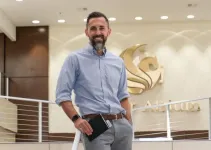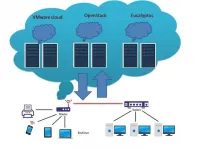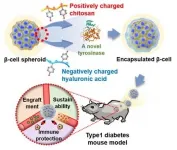Rude behavior at work not an epidemic, new study shows
2021-06-24
(Press-News.org) Rude behavior at work has come to be expected, like donuts in the breakroom. Two decades of research on employee relationships shows that 98 percent of employees experience rude behavior at work, but now a new study suggests a large majority of workplace relationships are not characterized by rudeness. Isolated incidents of rude behavior at work, although somewhat common, do not point to widespread incivility between employees and their colleagues, according to a new UCF study.
"Because prior research suggests workplace mistreatment is harmful and widespread, it is often called an epidemic, but our findings show that rude behavior is less like the flu and more like cholera," says Shannon Taylor, an associate professor of management and co-author of the report. "It is still harmful, but far less common, and outbreaks are often traced to a single source - much like a contaminated water pump."
While the study was conducted prior to the COVID-19 pandemic, Taylor says his team's findings are just as applicable to remote work environments. Collaborating remotely presents a variety of challenges that can lead to miscommunication and misinterpretation.
"As employees return to work on-site, our study suggests developing and maintaining good relationships with co-workers is important now more than ever," Taylor says.
The study, co-authored by UCF doctoral student Lauren Locklear, was published this month in the Journal of Applied Psychology. The project takes a closer look at the influence of workplace relationships on disrespectful behavior in the office.
The study examined rude behavior among restaurant, manufacturing, and office workers. Researchers found that while most employees experience rudeness at work, these experiences came from a small number of co-workers. Although 70% of employees experienced rudeness at work, only 16 percent of workplace relationships were characterized by rude behavior.
An employee's individual personality, position and other traits are major factors in determining the level of incivility present in a given workplace. Across all study groups, researchers found that unique relationships between colleagues have just as strong an influence in determining whether workers will be rude to one another.
"Even if one employee is a jerk to everyone and their co-worker is the office punching bag, there is still something about their unique relationship that explains how well they get along together," Taylor says. "Most people do experience rude behavior, but most of their relationships are not characterized by rudeness."
Behavioral expectations and workplace culture also play a key role in influencing employee mistreatment. But an employee's perceptions about how their colleagues should treat each other have a stronger impact on rude behavior than an employee's perceptions about how their colleagues actually treat each other.
"Employees' beliefs about what is 'right and wrong' at work have a big impact on what happens on the job," says Locklear. "Employers should ensure there are strong norms for respect and civility in the workplace. Having a zero-tolerance policy for these rude behaviors is key to stopping mistreatment in its tracks."
Being clear and encouraging positive interactions will be key, the study's authors say.
"Our prior work shows gratitude and appreciation are important aspects to fostering positive employee relationships and decreasing negative workplace behavior," Locklear says. "Expressing these positive behaviors will be essential in determining how smoothly we return to in-person work environments."
INFORMATION:
Other study authors include: Donald H. Kluemper, an associate professor in University of Illinois at Chicago's Department of Managerial Studies, and Xinxin Lu, a Ph.D. student at University of Illinois at Chicago's Department of Managerial Studies.
[Attachments] See images for this press release:

ELSE PRESS RELEASES FROM THIS DATE:
2021-06-24
Berlin and Bath, 24th June 2021 - Precision-fermentation company Formo and the University of Bath co-published the first large-scale study of consumer acceptance for animal-free dairy products.
Researchers surveyed 5,054 individuals from Brazil, Germany, India, the UK, and the USA to understand what consumers think of animal-free dairy products.
Precision fermentation is a process that allows specific proteins to be produced via microorganisms. By inserting a copied stretch of cow DNA, microorganisms produce milk proteins. The process is more efficient than using animals to make proteins and avoids the negative side effects of industrial animal agriculture, which is responsible for 18% of all greenhouse gas emissions.
The findings of the study, published in ...
2021-06-24
Leukemia is a group of blood cancers that affects thousands of people worldwide. However, with advances in medicine, several different types of leukemia can be effectively treated with donor stem cells through allogenic stem cell transplantation (allo-SCT). One such type of leukemia is B-cell acute lymphoblastic leukemia (B-ALL), which is caused by uncontrolled proliferation and prolonged existence of cancerous B-cells. While allo-SCT can 'cure' B-ALL in several cases, there are also cases of failure, characterized by deterioration in health after a period ...
2021-06-24
The brain is not a passive recipient of injury or disease. Research has shown that when neurons die and disrupt the natural flow of information they maintain with other neurons, the brain compensates by redirecting communications through other neuronal networks. This adjustment or rewiring continues until the damage goes beyond compensation.
This process of adjustment, a result of the brain's plasticity, or its ability to change or reorganize neural networks, occurs in neurodegenerative conditions such as Alzheimer's, Parkinson's and Huntington's disease (HD). As the conditions progress, many genes change the way they are normally expressed, turning some genes up and others down. The challenge for researchers like Dr. Juan Botas ...
2021-06-24
The central goal of cloud computing is to provide fast, easy-to-use computing and data storage services at a low cost. However, the cloud environment comes with data confidentiality risks attached.
Cryptography is the primary tool used to enhance the security of cloud computing. This mathematical technique protects the stored or transmitted data by encrypting it, so that it can only be understood by intended recipients. While there are many different encryption techniques, none are completely secure, and the search continues for new technologies that can counter the rising threats to data privacy and security.
In a recent study published in KeAi's International Journal of Intelligent Networks, a team of researchers from India and Yemen describe a novel, two-step cryptography ...
2021-06-24
A research team, led by Prof. Nathaniel S. Hwang and Prof. Byung-gee Kim, from Seoul National University (SNU) and Prof. Dong Yun Lee, from Hanyang University, has used enzymatic crosslinking to create nanofilms on cell surfaces. SNU has announced that it has developed a "cell caging" technology for the applications in cell-based therapies. The "cell caging" technique can prevent immune rejection during heterologous islet cell transplantation, facilitate smooth cell insulin secretion, and treat type 1 diabetic patients without immunosuppressants.
The research team succeeded in producing a nanofilm by using the electrostatic force to stack chitosan, which is a biological polymer, and hyaluronic acid in that order. To overcome the shortcomings ...
2021-06-24
Across the world, type 2 diabetes is on the rise. A research group has discovered a new gene that may hold the key to preventing and treating lifestyle related diseases such as type 2 diabetes.
The results of their research were published in the journal Nucleic Acids Research on June 18, 2021.
Selenoprotein P (SeP) is an essential plasma protein containing the micronutrient selenium. However, too much SeP spells trouble.
Excess SeP increases insulin resistance, thus weakening the effect of insulin, and worsening the metabolism of glucose.
"Excess SeP is the enemy when it comes to type 2 diabetes," stressed professor Yoshiro Saito from the Graduate School of Pharmaceutical Sciences at Tohoku University and co-author of the ...
2021-06-24
Female elephant seal weigh on average 350 kg, and dive continuously to the ocean's mesopelagic zone, about 200 to 1,000 meters deep, to consume their only prey: small fish that weigh less than 10 grams. Now, an international team of researchers, armed with eight years of data, may have answered a decades-long question: How do seals maintain their large size on such small prey?
They published their answer on May 12 in Science Advances.
"It is not easy to get fat," said paper author Taiki Adachi, research fellow with the National Institute of Polar Research and the School of Biology, University of St Andrews. "Elephant seals have to spend almost ...
2021-06-24
Genome study reveals East Asian coronavirus epidemic 20,000 years ago
An international study has discovered a coronavirus epidemic broke out in the East Asia region more than 20,000 years ago, with traces of the outbreak evident in the genetic makeup of people from that area.
Professor Kirill Alexandrov from CSIRO-QUT Synthetic Biology Alliance and QUT's Centre for Genomics and Personalised Health, is part of a team of researchers from the University of Arizona, the University of California San Francisco, and the University of Adelaide who have published their findings in the journal Current Biology.
In the past 20 years, there have been three outbreaks of epidemic severe coronaviruses: ...
2021-06-24
In the 1950s, researchers made the first unexpected discoveries of dinosaur remains at frigid polar latitudes. Now, researchers reporting in the journal Current Biology on June 24 have uncovered the first convincing evidence that several species of dinosaur not only lived in what's now Northern Alaska, but they also nested there.
"These represent the northernmost dinosaurs known to have existed," says Patrick Druckenmiller of the University of Alaska Museum of the North. "We didn't just demonstrate the presence of perinatal remains--in the egg or just hatched--of one or two species, rather we documented at ...
2021-06-24
Images of dinosaurs as cold-blooded creatures needing tropical temperatures could be a relic of the past.
University of Alaska Fairbanks and Florida State University scientists have found that nearly all types of Arctic dinosaurs, from small bird-like animals to giant tyrannosaurs, reproduced in the region and likely remained there year-round.
Their findings are detailed in a new paper published in the journal Current Biology.
"It wasn't long ago that people were pretty shocked to find out that dinosaurs lived up in the Arctic 70 million years ago," said Pat Druckenmiller, the paper's lead author and director of the ...
LAST 30 PRESS RELEASES:
[Press-News.org] Rude behavior at work not an epidemic, new study shows








